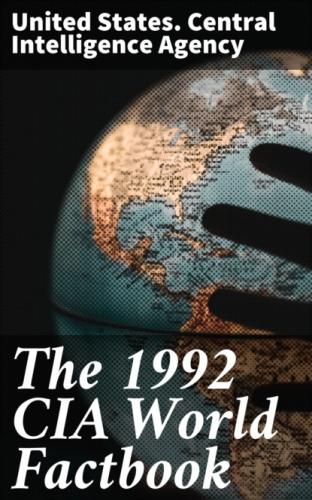owns 1, and Romania 3
Civil air:
11 major transport aircraft (Greek Cypriots); 2 (Turkish Cypriots)
Airports:
14 total, 14 usable; 12 with permanent-surface runways; none with runways
over 3,659 m; 7 with runways 2,440-3,659 m; 3 with runways 1,220-2,439 m
Telecommunications:
excellent in both the area controlled by the Cypriot Government (Greek
area), and in the Turkish-Cypriot administered area; 210,000 telephones;
largely open-wire and radio relay; broadcast stations - 11 AM, 8 FM, 1 (34
repeaters) TV in Greek sector and 2 AM, 6 FM and 1 TV in Turkish sector;
international service by tropospheric scatter, 3 submarine cables, and
satellite earth stations - 1 Atlantic Ocean INTELSAT, 1 Indian Ocean
INTELSAT and EUTELSAT earth stations
:Cyprus Defense Forces
Branches:
Greek area - Greek Cypriot National Guard (GCNG; including air and naval
elements), Greek Cypriot Police; Turkish area - Turkish Cypriot Security
Force
Manpower availability:
males 15-49, 183,899; 126,664 fit for military service; 5,030 reach military
age (18) annually
Defense expenditures:
exchange rate conversion - $209 million, 5% of GDP (1990 est.)
:Czechoslovakia Geography
Total area:
127,870 km2
Land area:
125,460 km2
Comparative area:
slightly larger than New York State
Land boundaries:
3,438 km; Austria 548 km, Germany 815 km, Hungary 676 km, Poland 1,309 km,
Ukraine 90 km
Coastline:
none - landlocked
Maritime claims:
none - landlocked
Disputes:
Gabcikovo Nagymaros Dam dispute with Hungary
Climate:
temperate; cool summers; cold, cloudy, humid winters
Terrain:
mixture of hills and mountains separated by plains and basins
Natural resources:
hard coal, timber, lignite, uranium, magnesite, iron ore, copper, zinc
Land use:
arable land 37%; permanent crops 1%; meadows and pastures 13%; forest and
woodland 36%; other 13%; includes irrigated 1%
Environment:
infrequent earthquakes; acid rain; water pollution; air pollution
Note:
landlocked; strategically located astride some of oldest and most
significant land routes in Europe; Moravian Gate is a traditional military
corridor between the North European Plain and the Danube in central Europe
:Czechoslovakia People
Population:
15,725,680 (July 1992), growth rate 0.2% (1992)
Birth rate:
13 births/1,000 population (1992)
Death rate:
11 deaths/1,000 population (1992)
Net migration rate:
NEGL migrants/1,000 population (1992)
Infant mortality rate:
11 deaths/1,000 live births (1992)
Life expectancy at birth:
68 years male, 76 years female (1992)
Total fertility rate:
1.9 children born/woman (1992)
Nationality:
noun - Czechoslovak(s); adjective - Czechoslovak
Ethnic divisions:
Czech 62.9%, Slovak 31.8%, Hungarian 3.8%, Polish 0.5%, German 0.3%,
Ukrainian 0.3%, Russian 0.1%, other 0.3%
Religions:
Roman Catholic 50%, Protestant 20%, Orthodox 2%, other 28%
Languages:
Czech and Slovak (official), Hungarian
Literacy:
99% (male NA%, female NA%) age 15 and over can read and write (1970 est.)
Labor force:
8,200,000 (1987); industry 36.9%, agriculture 12.3%, construction,
communications, and other 50.8% (1982)
Organized labor:
Czech and Slovak Confederation of Trade Unions (CSKOS); several new
independent trade unions established
:Czechoslovakia Government
Long-form name:
Czech and Slovak Federal Republic
Type:
federal republic in transition
Capital:
Prague
Administrative divisions:
2 republics (republiky, singular - republika); Czech Republic (Ceska
Republika), Slovak Republic (Slovenska Republika); note - 11 regions (kraj,
singular); Severocesky, Zapadocesky, Jihocesky, Vychodocesky, Praha,
Severomoravsky, Jihomoravsky, Bratislava, Zapadoslovensky, Stredoslovensky,
Vychodoslovensky
Independence:
28 October 1918 (from Austro-Hungarian Empire)
Constitution:
11 July 1960; amended in 1968 and 1970; new Czech, Slovak, and federal
constitutions to be drafted in 1992
Legal system:
civil law system based on Austro-Hungarian codes, modified by Communist
legal theory; constitutional court currently being established; has not
accepted compulsory ICJ jurisdiction; legal code in process of modification
to bring it in line with Conference on Security and Cooperation in Europe
(CSCE) obligations and to expunge Marxist-Leninist legal theory
National holiday:
National Liberation Day, 9 May (1945) and Founding of the Republic, 28
October (1918)
Executive branch:
president, prime minister, Cabinet
Legislative branch:
bicameral Federal Assembly (Federalni Shromazdeni) consists of an upper
house or Chamber of Nations (Snemovna Narodu) and a lower house or Chamber
of the People (Snemovna Lidu)
Judicial branch:
Supreme Court
Leaders:
